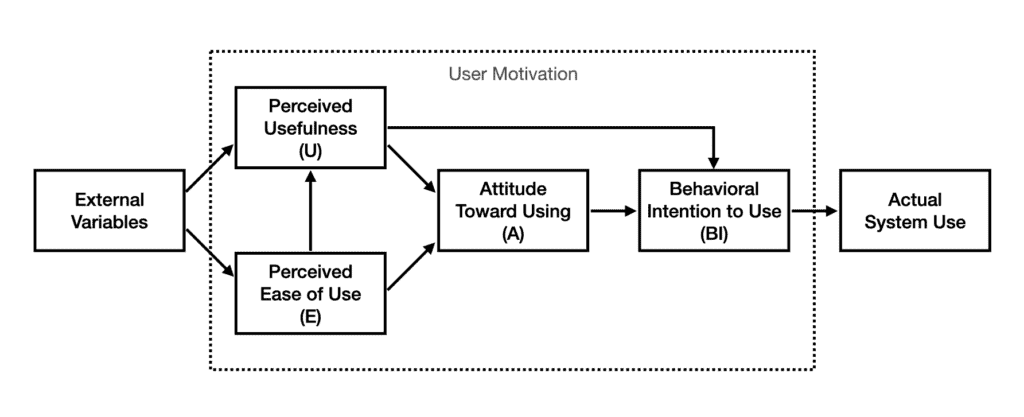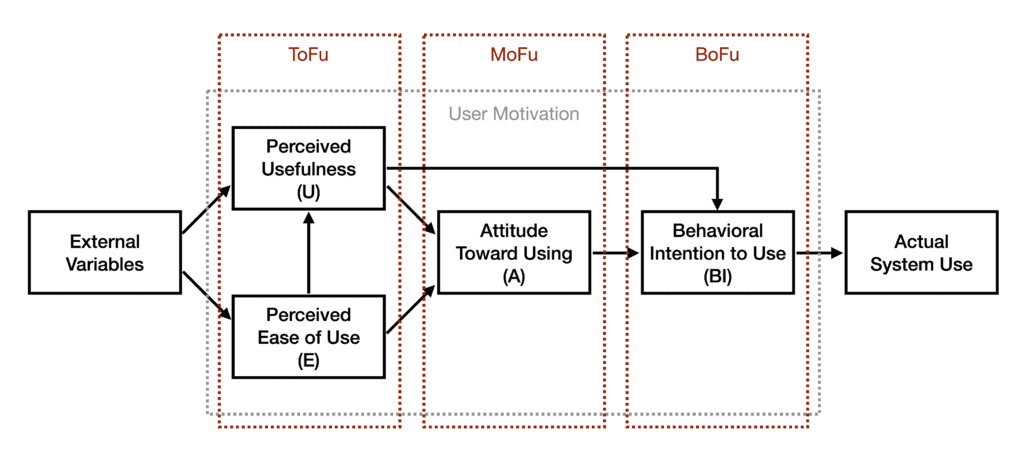The Technology Acceptance Model is a useful tool for developing an online marketing strategy. The model can be used to determine how customers will perceive and accept a new offering. The model considers two factors: perceived usefulness and perceived ease of use. Perceived usefulness indicates how beneficial the customer believes the offering will be. Perceived ease of use indicates how easy the customer believes the offering will be to use.
Here we show you how the Technology Acceptance Model can help companies determine which features they should emphasize in their marketing strategy. If customers find an offering useful and user-friendly, they are more likely to accept them. Businesses can use this information to create marketing materials that highlight these features. They can also make their website and other online tools user-friendly.
Estimated reading time: 4 minutes
Inhaltsverzeichnis
Development of an online marketing strategy
In most cases, issues related to the development of an online marketing strategy are addressed in the first step based on general guidelines, templates and the experience of the staff of the marketing agency that markets your business online. Then, one or more short test campaigns are conducted to test user response and analyze the so-called UX (user experience), after which the necessary improvements are made to the website to increase the conversion rate.
Such an empirical approach to the design and development of an online marketing strategy pays off in practice, but requires quite a lot of time and money until the company website reaches its optimal level of effectiveness with visitors.
On the other hand, the existing models for optimal interaction between a company and its customers can be quite easily transferred to online marketing.
For this purpose, we can draw on other areas of science and industry where in-depth analyses have already been conducted and various models have been created.
The Technology Acceptance Model (TAM)

- perceived Usefulness (U) and
- perceived Ease of Use (E).
“Perceived usefulness is defined here as “the degree to which a person believes that using a particular system would enhance his or her job performance.” This follows from the definition of the word useful: “capable of being used advantageously.” Within an organizational context, people are generally reinforced for good performance by raises, promotions, bonuses, and other rewards. A system high in perceived usefulness, in turn, is one for which a user believes in the existence of a positive use-performance relationship.” [1]
E indicates how elaborate the user finds the application:
“Perceived ease of use, in contrast, refers to “the degree to which a person believes that using a particular system would be free of effort.” This follows from the definition of “ease”: “freedom from difficulty or great effort.” Effort is a finite resource that a person may allocate to the various activities for which he or she is responsible. All else being equal, we claim, an application perceived to be easier to use than another is more likely to be accepted by users.” [1]

Attitude Toward Using (A) is a function of perceived ease of use and perceived usefulness. A refers to the degree of evaluative affect a person associates with the target system at work.
Behavioral Intention (BI) to use is determined by attitude toward use and determines actual use of the system. BI is defined as the subjective probability that a person will engage in a particular behavior.
Thus, the variable perceived ease of use has a significant positive effect on perceived usefulness and both – on attitude towards use. The variables perceived usefulness and attitude toward use have a positive effect on behavioral intention to use, and the variable behavioral intention to use has a significant effect on actual use of the system.
The TAM structure for the development of an online marketing strategy

Although the Technology Acceptance Model is considered a robust model, it has been criticized for being too simple to explain the complex psychological processes of a persona. However, for the development of an online marketing strategy, the components of the TAM are sufficient, and more details will be added when developing an already concrete plan to implement the strategy.
It is easy to see that the TAM model very clearly highlights the three stages of the marketing funnel: ToFu, MoFu and BoFu. This makes it clear which factors influence the behavior of visitors to the company website and which building blocks need to be developed and implemented on the landing page, for example.

Top of the Funnel (ToFu): At this point, the goal is not only to grab the visitor’s attention and inform them, but more specifically to convey the usefulness (U) and ease of use (E) of the product or service being offered.
Middle of the Funnel (MoFu): In this phase, it is important to help the visitor develop his own attitude towards the use (A) of the offered product or service.
Bottom of the Funnel (BoFu): In this phase, it is important to get the visitor to use (BI) the offered product or service, thus helping him to decide to buy it.
I hope you will find the Technology Acceptance Model helpful and useful in developing online marketing strategies for your business.
I wish you every success!
